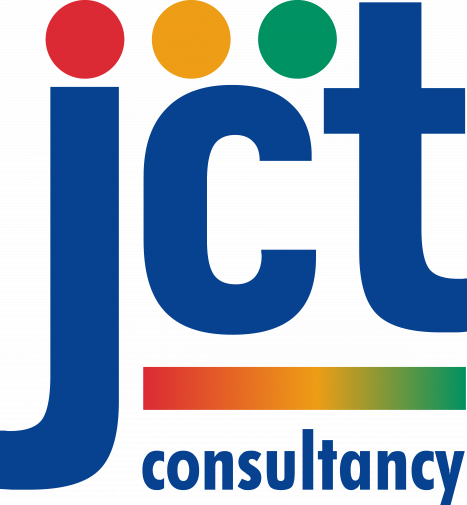The 2025 Papers List now Full. You may still submit a proposal but it will be placed on a Reserve List
Papers at the JCT Symposium are delivered by practicing engineers, innovators, academics and industry experts. We pack in around 20 to 25 papers over two days in a single theatre keeping the audience engaged and informed.
If you are interested in submitting a Paper and presenting it for 2025 all we initially ask for is a working title and a one or two paragraph short synopsis. You can make a proposal by using our contact form.

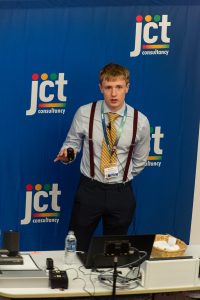
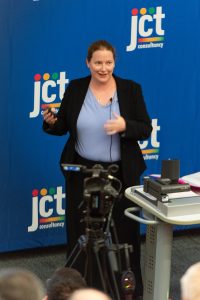
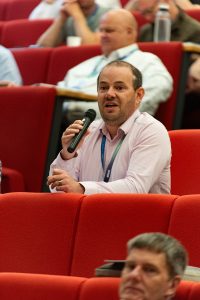
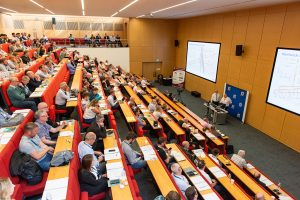
Papers for 2025 (programme is now FULL)
Steve Gooding is the Director of the RAC Foundation, Past-President of CILT, Fellow of the CIHT, Trustee of The Rees Jeffreys Road Fund, Visiting Professor University of the West of England and a former Director General at the DfT. As a leading figure in the world of motoring and transport policy in his Keynote Address "The Future" Steve will address the challenges that the future is set to pose for transport and traffic management professionals - should we be expecting more of the same or a radical departure from the world as we've known it?
Darren Capes ITS Policy Lead and TTF Manager, Traffic and Technology Division, Department for Transport will update the Audience on relevant topics.
Traffic congestion and queues on urban road networks cause high delays for car drivers, buses, and also some
pedestrians. Traffic congestion and queues also generate air pollution which affects all road travellers and also
some non-travelling residents. Traffic control strategies seek to reduce at least some of these large negative
impacts. However, selecting the right control strategies is not a straightforward task, since road networks are
complex by nature, and their state depends on capacity-demand interactions, travel behaviour (including routeing
decisions), congestion dynamics and other dynamic and stochastic factors. In this paper we consider upstream-
gating merge-control. This strategy systematically protects specific sub-networks from long queues and
congestion without reducing overall network throughput. This paper contributes to the state of the art in
network-wide traffic control, taking explicit careful account of users’ response to control policies (including
routeing changes) in a rather simple way. The paper demonstrates in a network example both
(i) how the traffic equilibrium is affected by upstream-gating merge-control and also
(ii) how the dynamical evolution of traffic is affected by upstream-gating merge-control.
The paper shows how the upstream-gating merge-control can be easily tuned to reduce public transport delays.
The JCT Traffic Signals Symposium Audience will be invited to submit questions on a variety of topics to an expert panel covering major aspects of Signal Design and Management.
For many of us the experience of crossing at busy junctions makes us feel second class to those passing in front of us in motor vehicles. Although the Highway Code now places pedestrians at the top of the road user hierarchy, many junctions are yet to be upgraded to provide adequate pedestrian priority and still largely focus on the movement of vehicles. But how can pedestrians be given greater priority without making congestion, and air quality, significantly worse? How can the needs of bus users be balanced with those of pedestrians? In this presentation we will draw upon examples from a range of authorities to illustrate how computer vision detection is enabling authorities to make more nuanced decisions about when to prioritise pedestrians whilst also minimising the impact on the network.
This session presents real-world deployments of the FUSION adaptive traffic signal control system at multiple regions across the UK. Drawing on performance data collected from live operations, the presentation explores the practical challenges encountered during implementation, the strategies used to address them, and the outcomes observed. Attendees will gain insights into how adaptive control is being applied in practice to improve traffic efficiency and reliability.
SRL’s new REMOS system is centrally monitored and controlled reducing the need for frequent site visits and allowing skilled operators to supervise multiple sites. This reduces the risk of accidents, reduces labour costs and through rapid identification and elimination of bottlenecks ensures smoother traffic flow and reduces emissions.
REMOS is operational now with a control centre based in Birmingham and SRL will share details of the operational successes and challenges so far.
This paper will cover the development of Swansea Council's Bus Priority Project (Swansea Metro) It will cover the design & implementation process and the monitoring of the system.
The FLEX detector is a self-contained, stand-alone detector designed for traffic data collection, that requires no power and no side road cabinets. Based on advanced AI algorithms and models, provides exceptional performance and 99% accuracy. Data is sent to cloud based servers through a built-in LTE modem, and can be retrieved through a user friendly web interface or API. We'll present a case study from the Swedish Road Administration where the FLEX is used for capillary data acquisition in secondary and rural roads.
This paper outlines a groundbreaking project led by Kirklees Council to control the flow of pedestrians and vehicles through a busy, multi-lane crossing in Huddersfield. Working with Starling Technologies, the Council are using predictive AI techniques to overcome pedestrian crowding and jaywalking at a central, high footfall location. This paper will present the baseline data and the understanding of crowd dynamics at the roadside. It will go on to detail the interventions put in place to adjust traffic and pedestrian flow during peak times, highlighting the impact on safety.
In Rotherham, we were successful in securing nearly £600k in funding through the TSOG awarded by DfT. Using our existing Imtrac data, it was quickly realised that all of the asset along the A631 in Rotherham was life expired. The basis of our bid was to upgrade the obsolescent equipment along this route and try to future proof the route and make it ready to test equipment crucial to bringing Connected and Autonomous Vehicles (CAVS) to the region. Early contractor involvement meant the project was started in April 2024 and completed in November 2024!! Not only did we upgrade what we set out to do, we even found some hidden bounces! What were these? You’ll have to wait for the presentation!
A look into how the largest roundabout in Plymouth overcame detection issues with smartmicro above ground sensors.
In 2021, York became the first UK city to deploy real-time traffic modelling within its traffic management operations. The main benefit of this deployment was to fuse together live data from the city's assets such as: timings from signals connected to UTC; and traffic flow detection from loops and cameras, with city-wide floating vehicle data and a transport model to provide an accurate prediction of current and near-future traffic conditions. This information allows the city to be proactive in its approach to traffic management.
In 2024, the city has implemented a real-world pilot to automatically simulate alternative signal plans within the real-time model, and to send recommendations to the network management officers to implement via the UTC. The combination of automated simulations - triggered by user-defined thresholds and results from the near-future traffic predictions - and implementation of the plans recommended using a customisable scoring system, resulted in traffic delay reductions of up to 8% in the peaks.
In our paper and presentation, we will explain the architecture of the system, present the results of the switch-on / switch-off test, and summarise the benefits and lessons learned from the pilot. We will also consider the options and potential benefits for city-wide rollout of such an approach.
A practitioner’s guide for incorporating passive safety into traffic signal designs, including dispelling myths and misconceptions, and the problems still to be faced.
The key routes on Blackpool’s network see considerable shifts in traffic patterns in the summer months due to tourism. The traffic signal control strategy along these routes is semi adaptive Fixed Time Urban Traffic Control (UTC), which means the routes don’t operate as effectively as they could, due to unpredictable nature of the traffic. This project, funded by the Department for Transports Green Light Fund, aims to install 32 multi lane radar detectors at strategic locations along five of these routes. The data collected from these detectors will be used to trigger fixed time UTC plans, created by AI, with the trigger points being predetermined data thresholds. This will provide an ‘almost’ fully adaptive traffic control solution allowing the Blackpool network to better cope with the unpredictable nature of the traffic patterns. The paper also explores Blackpool’s plans on measuring the impact of the project interventions, as well as the future aspirations for Smart Traffic Corridors in the town.
How can we use all of the data collected every second, to help with the age old statement "That area is always busy!"
Case study looking at some of the data collected and how that can be used to change the travelling publics behaviour.
We showed last year how SWARCO's adaptive traffic optimiser, ImFlow, can be used to improve general traffic flow. Can we use dynamic policies to benefit certain road users?
Is it possible to balance the conflicting needs of different groups and the wider public?
There is a stronger need than ever before to drive costs down, while still needing a sustainable future, for any equipment used on the highway, we need to re- look at how we are setting requirements, and capacity for scalability, and replacement equipment, needs to meet a basic functional requirement.
With a balance of public support and public budgets.
Pedestrian crossings at traffic signals normally cross a road from kerb to kerb, and are kept as short as possible for maximum efficiency. But what if the crossing needs to go from end to end through a shuttle-controlled area? This can lead to some long crossing distances – potentially up to 50m in length.
Following on from a proposal we received from a developer to signalise an historic bridge in South West Scotland with shuttle signals including a 50m controlled crossing for pedestrians and cycles, I have found a number of examples of controlled crossings through shuttle controlled sections at traffic signals in the UK. This paper presents a review of these sites, and summarises what we can learn from them to allow future examples to be successfully installed.
This presentation will detail Network Performance Delivery’s involvement in the planning, assessment and opening of the Silvertown Tunnel in East London. It will cover elements of modelling assessment, design and signal operation.
This presentation will showcase Active Travel England’s approach to assessing junctions, highlight good practice, and some common pitfalls that we’ve seen whilst being involved in schemes.
As towns and cities become more densely populated, the way we approach mobility must evolve to ensure a balanced efficient and sustainable transport network. With increasing demand on road space there is a need to rethink vehicle, cycle and pedestrian corridors and multimodal integration. At the same time, advancements in data collection and transport analytics offer new opportunities to understand movement patterns and support better decision making. How can we accelerate the delivery of innovative mobility services that enhance connectivity while maintaining efficiency? What role do journey planning tools and smart infrastructure play in shaping the future of transport? This paper will look at how emerging technologies and data-driven approaches can create smarter more adaptive cities.
In every practical application using technical equipment, significant developments in technology create opportunities for major changes in the types of equipment that become available and their use. This paper takes a historical look at the two such changes during the 20th century relating to traffic signal control: the introduction of traffic detection to early electro-mechanical signals; and from solid state controllers to microprocessors.
The CHARM programme is a strategic initiative to realise an open, modular architecture for Advanced Traffic Management Systems (ATMS). The selected software technology under CHARM provides the level of integration, scalability, and resiliency to manage highways more effectively and safely. Additionally, CHARM offers a modern ICT framework and a standards-based platform that supports the timely and cost-effective deployment of future services and innovation modules to meet the evolving needs of NH and their customers.
This paper reflects a forward-thinking approach in tackling the complexities of MOVA implementation at roundabouts, including both single stream and Linked-MOVA configurations. By exploring intelligent strategies for managing overlapping entry greens, we demonstrate how adaptive thinking can lead to more responsive and efficient control, reducing delays and increasing roundabout capacity. We will also look at how the integration of advanced detection technologies presents further opportunities to enhance performance and resilience in roundabout signal control.
The Symposium Learned Programme is split into seven sessions delivered contiguously over two days. Sessions are Chaired (moderated) by leading industry professionals and academics.
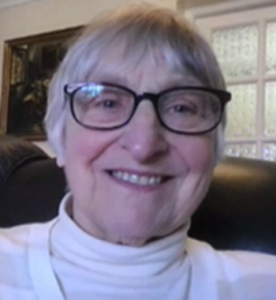
Professor Margaret C. Bell, CBE
Emerita Science City Professor of Transport and Environment - Newcastle University. 2006: Honoured Commander of the British Empire for services to Sustainable Transport, Queen’s 80th Birthday. Honorary Fellow of IHE, FICE, FIHT and CMILT and Honorary Editor Chief of the IET ITS. 2019: Rees-Hills ITSUK Lifetime Achievement Award. Founder, in 2000, and Chair of the ITSUK Smart Environment Forum until 2021. 2024: Roll of Honour JCT and Hall of Fame UTSG. Currently the Independent Chair of the Bus Service Improvement Plan Enhanced Partnership Board in Derbyshire. Researching the performance measures for Green Light Optimal Speed Advisory system operating in SCOOT, Split Cycle Offset Optimisation Technique; evaluating roadside pollution (air and noise) in the vicinity of motorways operating Automatic Traffic Management; understanding travel behaviour of the Tyne and Wear Metro users and influences of mode choice of Bangkok commuters. Exploring the integration of bus, LRT and rail systems with sustainable first/last mile options (including shared e-mobility electric cars, e-bikes, e-scooters, e-Cargo bikes) and ITS traffic control and management offering an alternative to car use to reduce carbon and improve air pollution.

Mike Guerin
Head of Business Development for SWARCO UK & Ireland.
In his role, Mike leads the Sales, Marketing and Bid functions for SWARCO’s Traffic products. These include Urban Signs, Inter Urban Infrastructure (Signs & Signals) and software solutions (UTC, UTMC, MyCity). He has 6 years’ experience in the ITS sector, including 3 years at TRL Software, leading their Sales & Marketing function.
Mike has extensive experience in leading Sales & Marketing teams in software and other industries, having worked for FTSE100, S&P500, SME’s and Scale Up companies. Mike has a degree & Masters from Lancaster University Management School, is a Founding Fellow of the UK Sales Association and is a big sports fan (speak to him about 90’s Premier League football, the pain of supporting Middlesbrough or his love of American Sports, particularly Chicago’s Teams). He lives in Ascot with his wife and 2 young children.
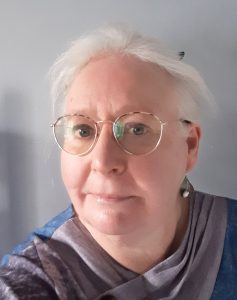
Jennie Martin MBE FCILT, Trustee, PACTS
Jennie Martin has spent her working life in transport – with the then British Rail, the Corporation of London, and ITS United Kingdom. She was Secretary General at ITS (UK) from 2004 to 2023. She is a past Chair of the Network of National ITS Associations. She is the Hon. Secretary of CILT International, Chair of Bus Users UK, a Trustee of PACTS, Member of the ITS Committee at BSI, and of the National Highways Research and Innovation Advisory Board. Jennie is originally from Sweden but a happily naturalised Londoner for many years.
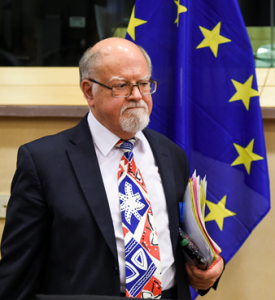
Eric Sampson CBE
Eric Sampson is a retired UK Senior Civil Servant. At the Department for Transport he worked in the Marine, Highways, Rail, Safety and Local Transport Directorates, as well as The Coastguard Agency. He has held many national and international appointments including the European Commission’s High Level Advisory Group on Intelligent Transport Systems and Chairmanship of ITS-UK and the ERTICO Supervisory Board. He chaired the Boards of Directors for ITS World Congresses in Paris 1994 and London 2006. He was appointed CBE in 2007, elected to the ITS Global Hall of Fame in 2016, and is a visiting Professor at a number of Universities. He has been a transport strategy adviser to the Governments of Denmark, Finland, Ukraine, Sweden and New Zealand in addition to the UK.
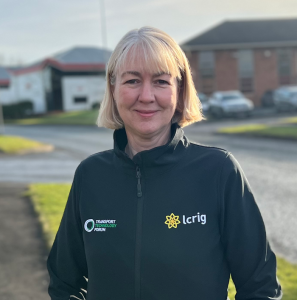
Paula Claytonsmith
Chief Executive at Local Council Roads Innovation Group (LCRIG).
Paula is the Chief Executive of the Local Council Roads Innovation Group (LCRIG), a not-for-profit organisation founded by councils to foster collaboration and innovation in highways and transport technology. LCRIG connects councils, supply chain organizations, and government policymakers through regional groups, events, and knowledge-sharing initiatives.
With a diverse career spanning multiple sectors, Paula has led frontline services in local government, served as an Assistant Director at a national public sector improvement agency, worked in government advisory at KPMG, and undertaken international consulting assignments. She has also held senior roles in political lobbying, strategy, and policy advisory for national government initiatives. Beyond the public sector, she has held executive leadership positions in the charitable sector, overseeing operations for a major stem cell cancer charity and driving strategic policy and lobbying efforts for an environmental charity focused on behaviour change and local environmental quality.
In 2015, despite not having an engineering background, Paula joined the highways sector—a field she has since become deeply passionate about. She is now a recognised industry leader, frequently appearing on BBC Radio 4, international radio, and television programs, as well as being quoted in The Sunday Times. She has authored articles for industry bodies such as IHE, CIHT, RSMA, and LCRIG’s Insights newsletter and regularly speaks at national and international conferences.
In 2018, Paula served as an expert witness before the House of Commons Transport Select Committee on Local Roads Funding and Governance, earning recognition from the Committee Chair. She has contributed to several key industry steering groups, including Road Condition Statistics (PAS 2161), the National Infrastructure Commission’s CAM expert group, National Audit Office reports on infrastructure, and the Department for Transport’s UKRLG Asset Management Board. She also provides policy support for the Transport Technology Forum and sits on the National Highways Strategic Research and Innovation Advisory Board (RIAB) and the National Highways Roads Research Alliance. Her involvement extends to having served as a technical committee member for PIARC (World Roads Association), sitting on the Highways Magazine editorial board, acting as a rapporteur for ITS European and World Congresses, and being a Council member of the Institute of Highway Engineers.
Widely known for her engaging and informal Friday vlogs on LinkedIn, Paula shares insights into LCRIG’s work—often with a personal touch, including appearances from her horses and reflections on her love of nature. Her dedication to supporting councils, private sector partners, and government stakeholders continues to drive innovation and strategic progress in highways and local roads.

Alistair Gollop FIHE MIET
Technical Advisory Executive - The Alistair Gollop ITS & Traffic Signal Consultancy. Alistair is a freelance Intelligent Transport Systems (ITS) Technical Advisory Executive at The Alistair Gollop ITS and Traffic Signal Consultancy. A former Technical Principal at Mott MacDonald (where he was the Global Transport Technology Technical Champion), and an Atkins, Beca and Peek alumnus. He has over 30 years in-depth international experience of the ITS sector, resulting in an extensive specialist knowledge of traffic systems and their applications. In addition to being an ITS Technologist, he is also the author of the well-respected “Traffic Signals” and “Traffic Control” books, which are used extensively for new entrants to the sector. He has written numerous articles for publications and regularly presents and moderates at conferences. In addition to consultancy, he is also the Founder of the ITS Now initiative, which exists to promote best practice and professional development within the Intelligent Transport Systems (ITS) sector. ITS Now originates resources ranging from videos (subscribe to the @ITSNow YouTube Channel), ITS Edge magazine, reference books and guidance documents through to informative references and educational content. The reach and scope of this initiative has been widened by the increasing involvement by a range of key industry organisations from across the sector, including establishing Professional Development Partnerships (PDP) with The Institute of Highway Engineers and Intelligent Transport Systems UK, and being made Official Media Partner for ERTICO (ITS Europe), the 2024 Dubai ITS World Congress and the 2025 Seville ITS European Congress. As Chair of the Professional Development Portfolio, Alistair is an Executive Council Member of The Institute of Highway Engineers.

Paul Hutton
Transport Consultant and co-owner of Highways-News.com. Paul Hutton is one of the world’s leading journalists specialising in transport technology. A trained broadcast journalist who worked as a presenter, newsreader and sports reporter on local and national radio and TV, Paul has been in the ITS sector for nearly 25 years having run the operations of two radio traffic news companies. Paul worked on the Travel Information Highway and delivered the Traffic Radio service for government as well as providing traffic reports for the vast majority of BBC and commercial radio stations across the UK and also working in Canada, Australia and the US. He co-owns the website Highways-News.com, provides PR and communications support for the Transport Technology Forum and a number of SMEs, and regularly hosts webinars and moderates panel debates at events.
